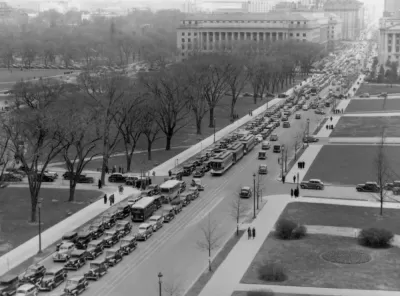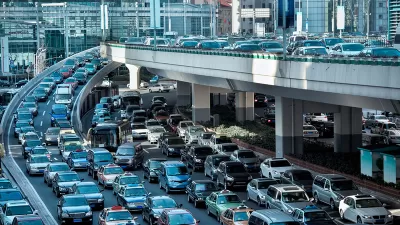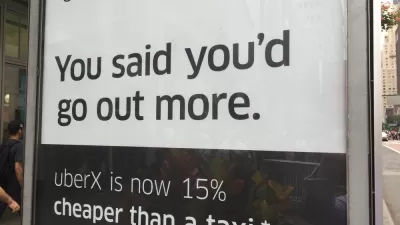The District of Columbia is attempting to build a data-based model for the mix of public and "shared" transportation modes on its streets, but is still finding holes in the data necessary to build new policies.

Ride hailing has exploded in the Washington, D.C. market on the same timeline as a steady decline in taxi ridership, according to recently released data.
"New figures provided by the office of D.C. Mayor Muriel E. Bowser (D) show that taxi ridership has fallen 31 percent, or about 6 million trips, since the ride-hailing boom began in late 2015," reports Faiz Siddiqui. A ride-hailing surcharge is already generating as much funding as taxis did in 2015, showing further evidence of steady growth in ride-hailing services.
The increased use of ride-hailing also explains why Mayor Bowser has targeted the industry for increased taxes—beyond the 1 percent surcharge currently in place to 4.75 percent.
For context, Siddiqui notes the multiple studies in recent months that tie ride-hailing adoption to increased congestion and decreased transit ridership. But the real story is about the District's efforts to set transportation policy while also working to fill the holes in the available data about how people are traveling its streets. While programs like Uber Movement and SharedStreets (check out Coord for a non-Uber example of curb data platforms) have helped to some extent, the District and other cities around the country still lack a lot of information about average fares and total trips.
FULL STORY: As ride hailing booms in D.C., it’s not just eating into the taxi market — it’s increasing vehicle trips

Alabama: Trump Terminates Settlements for Black Communities Harmed By Raw Sewage
Trump deemed the landmark civil rights agreement “illegal DEI and environmental justice policy.”

Planetizen Federal Action Tracker
A weekly monitor of how Trump’s orders and actions are impacting planners and planning in America.

Why Should We Subsidize Public Transportation?
Many public transit agencies face financial stress due to rising costs, declining fare revenue, and declining subsidies. Transit advocates must provide a strong business case for increasing public transit funding.

Understanding Road Diets
An explainer from Momentum highlights the advantages of reducing vehicle lanes in favor of more bike, transit, and pedestrian infrastructure.

New California Law Regulates Warehouse Pollution
A new law tightens building and emissions regulations for large distribution warehouses to mitigate air pollution and traffic in surrounding communities.

Phoenix Announces Opening Date for Light Rail Extension
The South Central extension will connect South Phoenix to downtown and other major hubs starting on June 7.
Urban Design for Planners 1: Software Tools
This six-course series explores essential urban design concepts using open source software and equips planners with the tools they need to participate fully in the urban design process.
Planning for Universal Design
Learn the tools for implementing Universal Design in planning regulations.
Caltrans
Smith Gee Studio
Institute for Housing and Urban Development Studies (IHS)
City of Grandview
Harvard GSD Executive Education
Toledo-Lucas County Plan Commissions
Salt Lake City
NYU Wagner Graduate School of Public Service





























